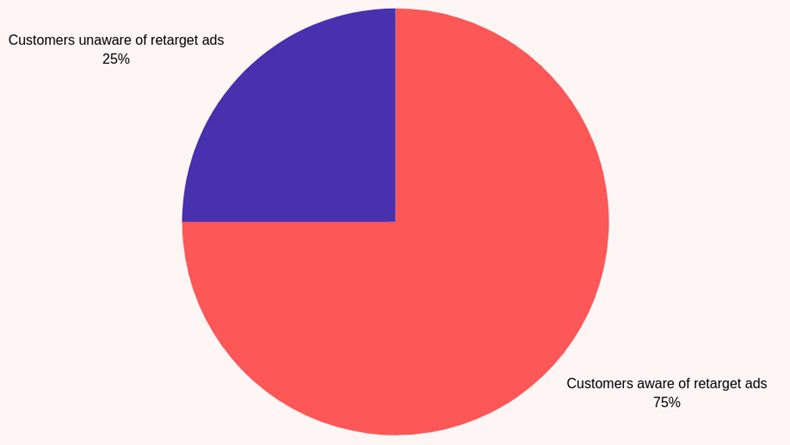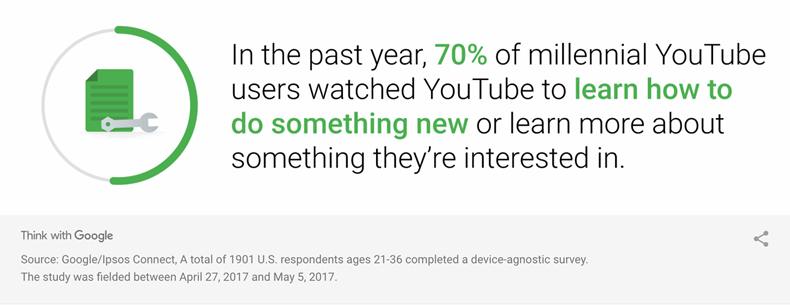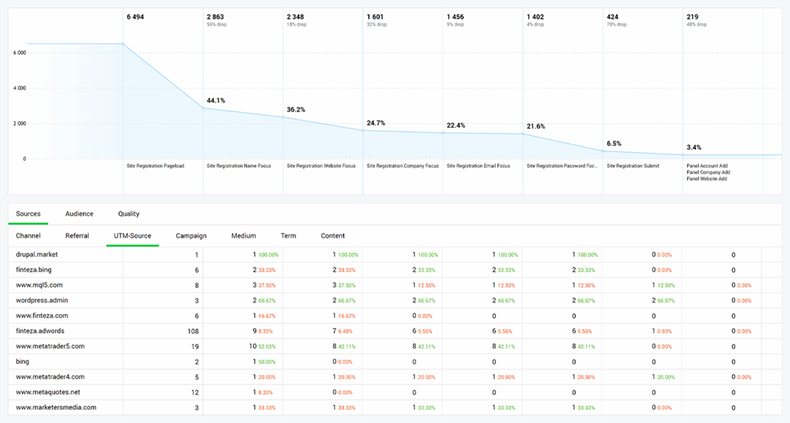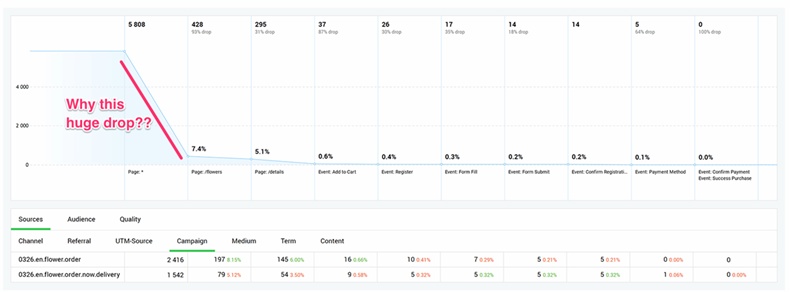Even though a marketer, you're probably in at least seven conversion marketing campaigns right now... as a target customer.
Conversion marketing is all around us. Consumers no longer have to sign up with their details before they're in a funnel that seeks to convert them into paying customers. Once they as much as follow a brand on Instagram, they're in a conversion funnel already.
That's where conversion marketing is today. And having customers in funnels doesn't make you a black hat marketer. In fact, 47% of Americans agree that ditching their privacy for a better deal is worth it.
In other words, they're OK with having you put them in a conversion funnel, as long as you make it worth their while.
But that also makes getting conversions harder because now you need to think, test, and research more thoroughly than you've ever—to figure out what your customers regard as a good deal.
But before we go into how to craft a good deal in your conversion marketing campaigns, let's get on the same page with a quick definition of conversion marketing.
Redefining Conversion Marketing
Let's keep it simple: Conversion marketing is every strategy or campaign you launch to drive specific customer actions.
Whether you use content marketing, AdWords, Twitter ads, Facebook ads, or YouTube ads, as long as your end goal or North Star metric (NSM) for any marketing campaign is to drive conversions, then it's conversion marketing.
But, as I noted earlier, conversion marketing has clearly taken on a new shape.
It's gone from "let's use that XYZ fashion influencer, she's got 1 million followers" to "let's use that ABC influencer; she gets 5,000 comments per post." In other words, customer action (comments, in this example) matters most to conversion marketing.
The old conversion playbook says "look at the numbers," the new playbook says "see what customers are responding to."
In essence, it's time to change your approach.
It's Time to Ditch Your Old Conversion Funnels
You need to ditch your old conversion funnels and tactics for one obvious reason: Consumers have become smarter than your old methods of converting them.
For example, 75% of consumers now know how retargeting ads work.

Non-techy people now know what it means when your "accept or reject cookies" widget pops up on their screen. They know "accept" means they might be entering a funnel and will be seeing your ads wherever they go online.
So you need to move away from...
- Just getting millions of visitors: You need to be identifying visitors and knowing (through testing, analytics, and research) what they're doing on your site.
- Using forms only on your landing pages: Implement forms and chatbots together; 64% of survey respondents recognized "24-hour service" as a benefit of chatbots.
- Going beyond acquiring users or subscribers: Learn their preferences and segment them accordingly; segmented campaigns get 14% more opens, 11% more unique opens, and 101% higher clicks than nonsegmented campaigns.
- Blindly throwing ads at people you think are your customers: Target the folks you know are your customers (based on your research and tests).
- Just writing conversion copy that appeals to every Tom, Dick, and Harry: Your conversion writing has to be for specific target audiences.
Those are some of the key ways conversion marketing has changed. And you as a marketer need to change your conversion marketing playbook accordingly.
Here are two key ways to do that.
How to Run Conversion Marketing Campaigns in 2019
Smarter consumers have become a new challenge for marketers. They don't just fill out forms and click headlines and ads the way they did years ago. To drive conversions today, depend more on what you're offering consumers than on the tactics you use around your offer.
But how do you make offers that consumers respond to?
1. Go deep, not wide
You need to dig deep into your customers' desires. Pick one problem they want to solve more than anything else, and display your utmost knowledge about it.
This means you need to go deep into a specific customer problem instead of picking multiple problems and trying to address them randomly.
In a survey by Google, 75% of Millennials said they watch YouTube videos to learn how to do something new.

This means consumers are paying attention to brands that are teaching them to do something new. Put another way: Your campaigns convert better when they promise to help cause the change your customers are trying to make. If your target customers are trying to make tea, for example, then your campaigns should be offering to help them with that.
But first you need to understand the changes they're trying to make in their life or business. Surveys and polls are a good place to start. But expert marketers know testing is where the real customer information is discovered: You run campaigns, see how your audience respond to them, and gather data from there.
That's where tools come in. Finteza, for example. It shows you how visitors are responding to your campaigns and offers. You'll know whether they find your offers useful or not, and what percentage of your visitors are moving from one stage of your funnel to the next.
The tool automatically creates a funnel for everyone who converts on your site, giving you a full view of your target customer's journey to conversions. From the specific campaigns that drive them into your site to all the conversions they made afterward, it's all laid out.
2. Identify critical customer turn-offs
Once you know what nagging problems your customers need a solution to, launch your campaign. And once you do, three things become obvious:
- Traffic
- Conversions
- Churn
Of course, the first two are what you want; churn is the undesirable here, and that's what you'll need to keep working on throughout the lifespan of your campaigns. But it can be tough to know exactly why a customer is dropping off from your funnels. You could think of a million reasons why... and still be wrong.
Again, good tools can make our lives easier as marketers, helping you understand which pages customers are dropping off from so you can optimize them for better conversions. And when the tool shows you something like this, you know there might be a critical problem causing a drop-off rate within your funnel:
In this example, a campaign had brought in thousands of visitors, but only 0.1% of them are taking all the steps that lead up to the payment page. So the tool gives you a clear view of what exactly you're doing right or wrong with regard to conversions (Finteza explains it better here).
Embrace the New Conversion Marketing and Ditch Your Old Funnels
Every business has at least one funnel—even if it doesn't actively create it.
Once visitors are on your site, they've entered a funnel. It's called that because there's an action you want them to take and you've created content, forms, widgets, or other means to drive them to eventually take that action by the end of their journey. All of that is conversion marketing.
As they go through those forms and widgets, they're in your funnel trying to figure whether or not your offer is a good deal for them.
Your work with conversion funnels has changed: There's now a huge emphasis placed on campaign offers, like never before in marketing. Any campaign you run today must make a great offer (promise some really good content or offer a groundbreaking solution to a nagging problem).
Fully 75% of consumers, according to the aforementioned Google research, have said that with a strong promise of a good deal, they will hand over their personal information—that is, in exchange for something that will help them do something new, different, or whatever it is they're looking for.
Which is why thoughtful offers should be the anchor of your conversion marketing this year.






